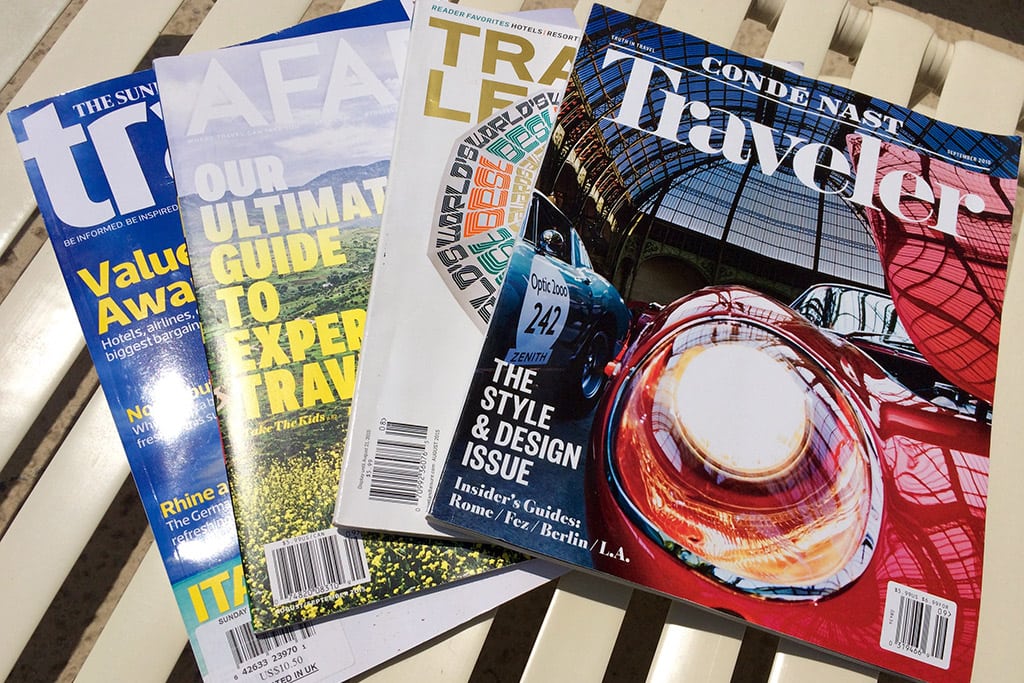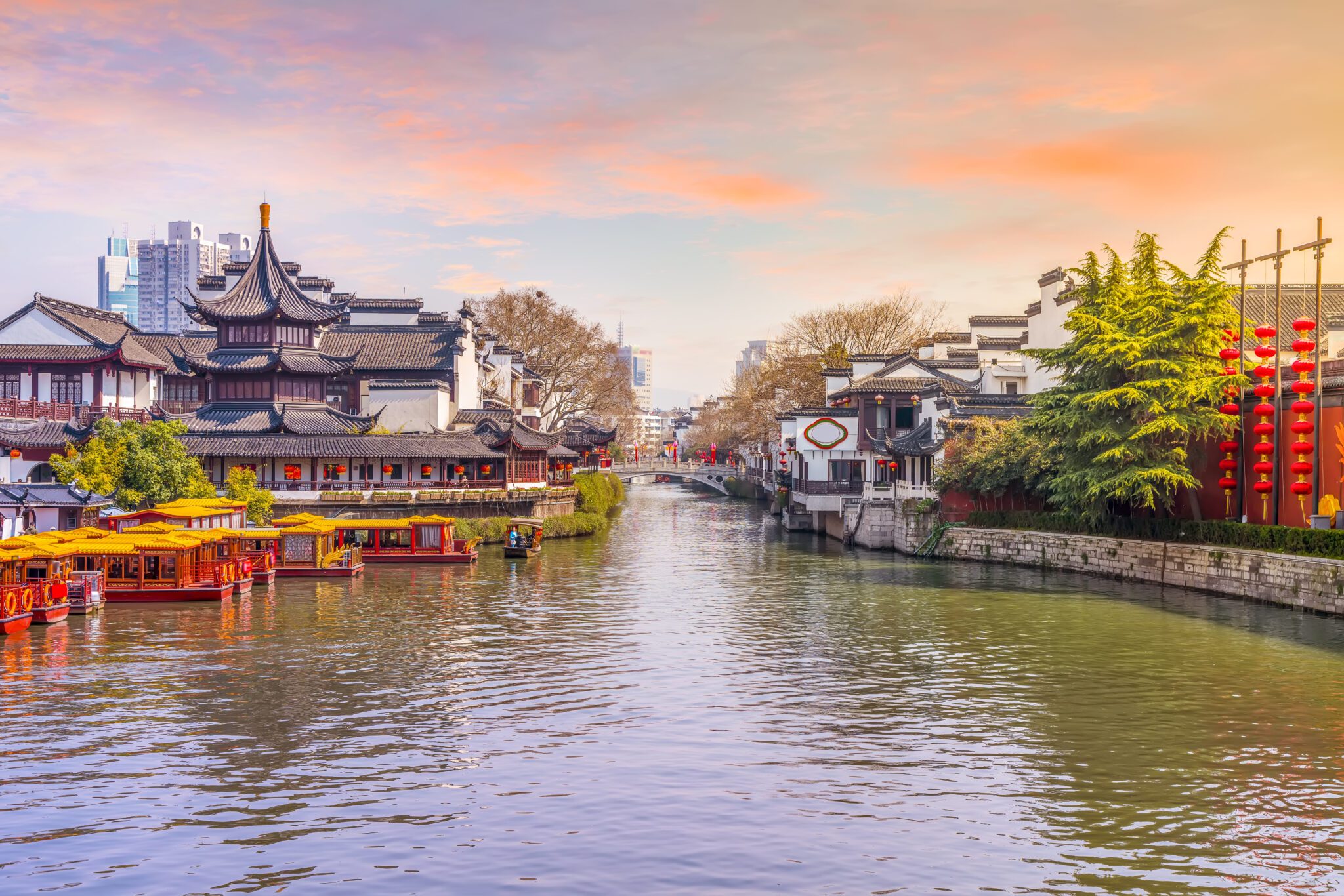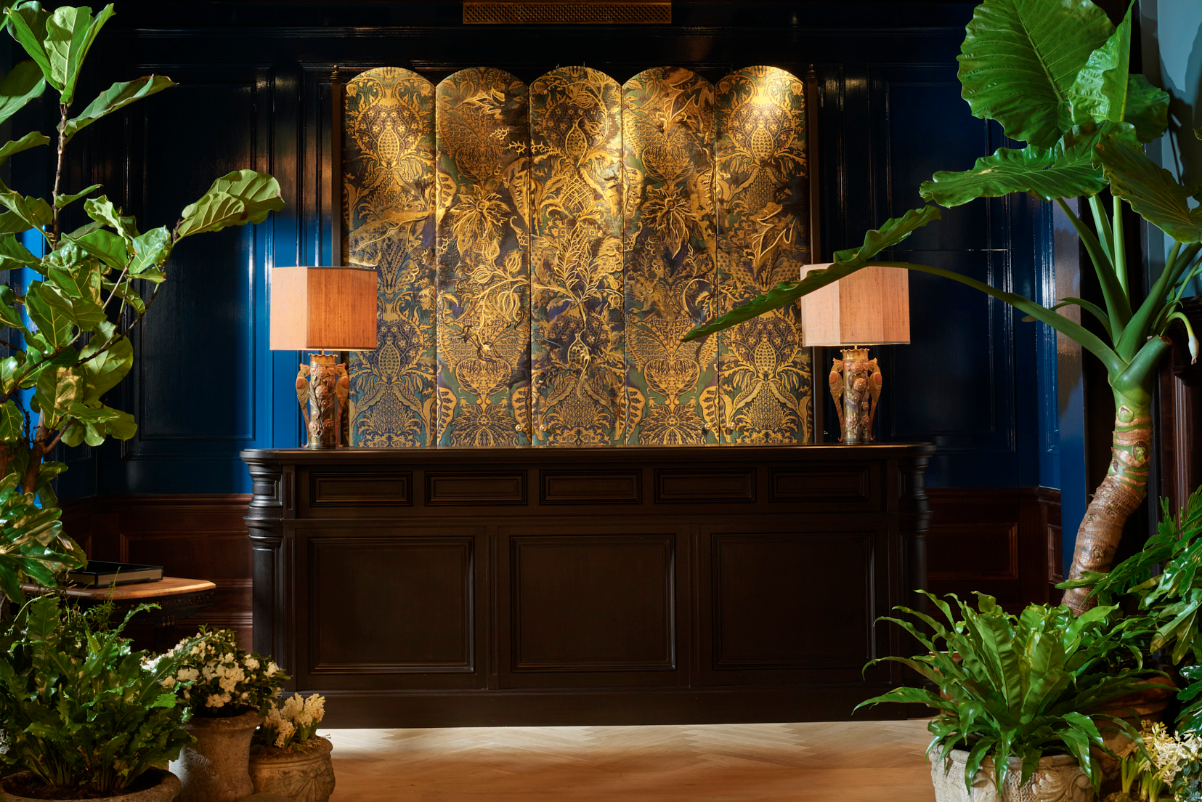What Happens When You Read a Stack of Travel Magazines at the Beach

Skift Take
Traditional print travel publishing has definitely seen better days, but there's one area where it will always excel over digital devices: The sandy beach during summer vacation.
Last week I tried to unplug (somewhat successfully) during a beach getaway, and took along a collection of magazines that had been neatly stacked since the beginning of the summer season. I also grabbed the new expanded size edition of Condé Nast Traveler for a preview of what this fall will entail.
In theory the beach is one of the few places where the magazine format can still beat out digital. I know my phone and laptop were left behind.
But I spent six straight days on the sand and only saw one other person (my wife) reading a print magazine. Everyone else was either on his or her smartphone or reading a Jodi Picoult novel. You can see this play out at resorts around the world over the last few years as finding a place to buy a magazine has become more difficult. If you don't grab it at an airport newsstand, you're going to have trouble finding it once you hit the resort. Meanwhile, pervasive Wi-Fi is becoming the norm both domestically and abroad.
The Big Read
Afar's August/September issue (it publishes seven issues per year) promises the ultimate guide to experiential travel, but we'd argue it more workable than ultimate. The bits and bobs of this guide don't say as much about experience travel as do the magazine's regular stories. A feature about Moroccan food and an as-told-to guide to New Orleans' Treme neighborhood do a much better job of delivering on the experiential promise than the ultimate guide.
While we like Afar's dedication to experiential travel, the limits of the first-person narrative are clear when you compare the Perth feature in this issue with the Perth feature in the Monocle's new Escapist travel annual. The Monocle approach uses writers that report and fade into the background as opposed to the traditional first-person "I did this then I did that" style of travel writing that is the norm in most publications these days.
At 274 pages, the Escapist is also the thickest of the magazines we took to the beach. Its features about ten destinations tell you all you need to know as a traveler, and maybe a real estate investor, too. There's no feeling that the editors are being dictated by any interests but their own, while at the same time you get the sense that all of these places will be on next year's various hot lists.
Travel + Leisure is a few issues into its new leadership and it reading it reminds us of the late 1990s. That's not a bad thing. At that time, T+L had its family magazine, as well as an edition devoted to golf. It was a good time for print. While these times aren't as good, T+L's August issue is still stuffed thick with stories; its "Beyond" section goes on and on and on, packed with service journalism and short stories with actionable information.
It's buffered by the annual World's Best package, a master of listicles that for 20 years has used reader surveys to call out the best hotel properties, cruise lines, airlines, tour companies, and others. Outside of the listings it's thin on context and regretfully adds a phrase that's poison to people who pay $5.99 to buy on the newsstand: "Go online to find additional descriptions and photos."
I'm on the beach. I want these things now.
When Condé Nast Traveler announced its expanded size—open, the edge-to-edge spread is now two inches bigger—in April, it used fashion icon Iris Apfel to announce the changes in a YouTube video. Fitting, since the magazine's focus on fashion is more prominent than ever, both in its articles about Hermes bags and Soho House-inspired clothing, and in coverage of the travel habits of designers including Joseph Font, Clare Waight Keller, and Armando Cabral. Pricing or contact information for the venues these people mention is noticeably absent.
The physical size and subject matter makes it feel and look more like the New York Times' quarterly T Magazine than the inspiration for your next great trip. Many people love this, but it tends to leave me feeling empty.
Until you get to the feature well, that is. Here the larger images on better paper make the new Conde Nast Traveler feel like the retina display of travel magazines. Upon opening to page 147, we felt pictures of Uruguay and Paris pop, and double-page spreads immerse readers in Rome, Fez, and Biarritz. This is how you make something feel like it has a shelf life beyond 30 days. It's as much a gift to photographers as it is to readers, as Traveler clearly won't be asking writers to use their iPhones to snap small thumbnail images in between note-taking and eating. You're going to need pros to fill these pages, and everyone will be better off for it.
Although pleasing me is likely low on the list of priorities for Traveler, I'd say: Add more big images at the front of the magazine and ditch the stories about where fashion designers spend too much money to sleep or eat. Or just go all photos and service-y captions and we'll still be happy.
If you need inspiration, look at the Sunday Times Travel Magazine. (It can also boast an extra inch in height over Traveler.) Sure it's helped by the London newspaper of the same name, but it's just so much fun to read and it seems like it's written for a broad set of readers, not a target demographic. For the excellent Value for Money issue (which, oddly these days, really delivered on the promise) that came out in July, the double-page spread section called "Take Me There" starts on page ten and follows with four centerfold-like spreads on Iceland's Seljalandsfoss, Salzburg, New York, and New Zealand's Hawkdun Range. They do this every issue, and the giant pictures always feels like an amuse bouche you didn't expect.
I've taken to thinking of the Sunday Times magazine as the Sears catalog of travel: You see things you want to do, then you want to know how you can buy it. Or you just tear out the pages and figure out later how to pay for the trip.
For London readers, the magazine's promise is simple: It's written just for you. And this simplicity makes me wonder what a U.S. magazine would look like if it only cared about readers in New York, Los Angeles, Chicago, or Dallas.
But this magazine also mixes high and low in a way that's rarely seen in U.S. titles (although Afar comes close), yet always seems as if it's on the side of the reader. For July the magazine chose Italy for its monthly "Total Guide" package which devotes two dozen plus pages to one big thing. It then dissects that destination completely, as it does every month with very populist destinations. That leaves it free to dive into more diverse destinations throughout the rest of the magazine.
Sponsored Content Is King
The biggest winner overall, though, is sponsored content (some magazines may still call this advertorial or "special promotions," but it is sponsored content). Like smart digital publications, print magazines know that presenting compelling content about destinations and brands is the fastest way past the clutter and into readers' minds. Every publication, with the exception of the Sunday Times, was just thick with it this summer.
In Traveler, it appeared as pages that kind of looked like regular Traveler content pages and appeared next to ads for destinations including Abu Dhabi, South Africa, Hokkaido, Charleston, and San Diego, among others. In Travel + Leisure, it was multiple ads connected to the World's Best Awards, as well as a feature from Peru. Afar pushed its partnership with Switzerland in a fold-out spread filled with bylined nuggets of info about experiential Switzerland, and also made room for Charleston advertorial.
In the Escapist, an insert from Airbnb told stories about hosts in six cities, and there are multi-page spreads for Madrid and Bangkok. But the Monocle minds really show off in a 24-page spread sponsored by the Spanish tourism board. This food feature is a quick tour of the country via regional cuisine, as well as trends and unique Spanish goods.
While readers know its not pure editorial, the content is good and helpful, rather than some cheesy ad that beckons the reader to "taste Spain."
And a little bit of great inspiration is all you're looking for on a beach in August.





